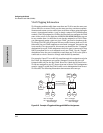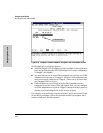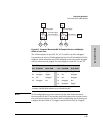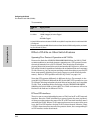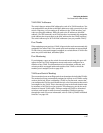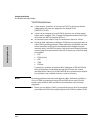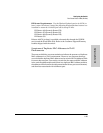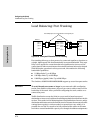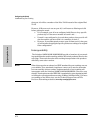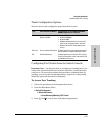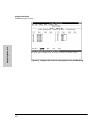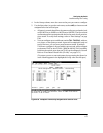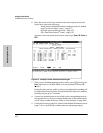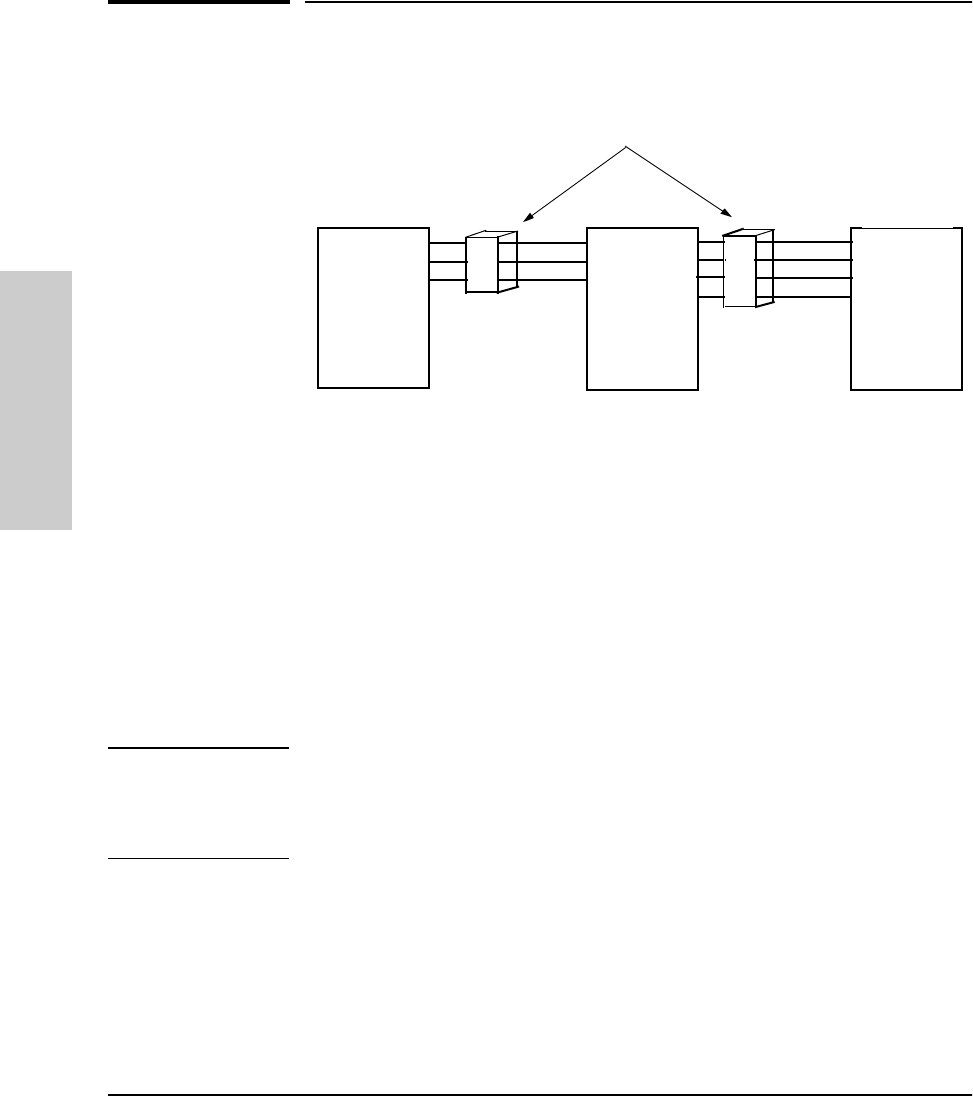
6-70
Configuring the Switch
Load Balancing: Port Trunking
Configuring the Switch
Load Balancing: Port Trunking
Figure 6-48. Conceptual Illustration of Port Trunking
Port trunking allows up to four ports to be connected together to function as
a single, higher-speed link that dramatically increases bandwidth. This capa-
bility can be applied to connections between backbone devices as well as
connections in other network areas where traffic bottlenecks have developed.
With full-duplex operation in a four-port trunk, this enables the following
bandwidth capabilities:
■ 10 Mbps links: Up to 80 Mbps
■ 100 Mbps links: Up to 800 Mbps
■ 1000 Mbps (gigabit) links: Up to 8000 Mbps
The Switches 1600M/2424M/4000M/8000M support up to ten four-port trunks.
Caution To avoid broadcast storms or loops in your network while configuring
trunks, first disable or disconnect all ports you want to add or remove from
both sides of the trunk. After you finish configuring the trunk, enable or re-
connect the ports.
Traffic distribution across the links in a port trunk is based on source/
destination or source-only address forwarding methods described later in this
section. This results in load balancing based on distribution of source and/or
destination addresses across the links in a trunk. Because the amount of traffic
coming from or going to various nodes in a network can vary widely, it is
possible for one link in a trunk to be fully utilized while others in the same
trunk have unused bandwidth capacity even though the address assignments
Switch 1 Switch 2
The multiple ports in a trunk behave as one logical port
port a port w
port b port x
port c port y
... port z
port
n ...
port n
port 1
port 2
port 3
...
port
n
port 5
port 6
port 7
port 8
...
port
n
Switch 3



